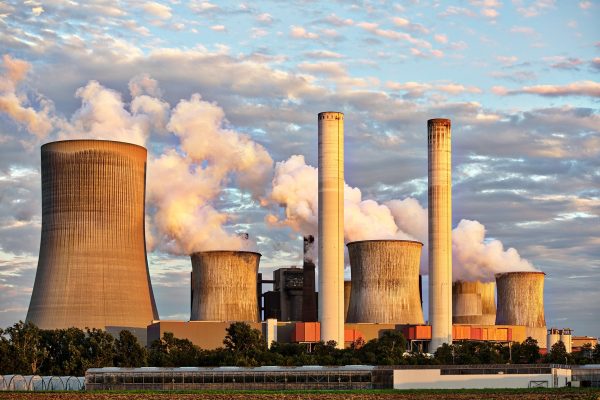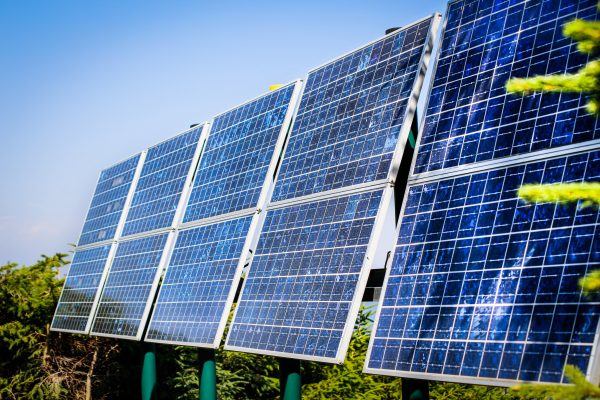In our `Learn from the Best` series we interviewed Mark Williams from Shipping Strategy about shipping decarbonisation and the energy transition. In our conversation, Mark talks us through technological advancements, new regulations, trade changes and what to expect in the future. This article will help even the freshest of novices to understand the industry’s transition.
Could you summarise what shipping decarbonisation is?
So, we all know about climate change. We’ve all seen that the planet is on fire this year. Wildfires burn all around the world, in Greece, near Athens, in Sicily, Sardinia, the Mediterranean has been roasting in nearly 48 degrees Celsius this year. We have to do something about greenhouse gas emissions. As humanity, we must cap them and reduce them by mid-century if we are to limit temperature rises to 2 degrees Celsius. So, we need to move away from hydrocarbons. The way forward is to move to hydrogen-based fuels, as they don’t give out greenhouse gas emissions when burnt and also to use them to generate electricity. We need to use those two forms of energy to replace oil, gas and coal in our industry and in our transport. Anything on land you can simply electrify. So anything that uses a diesel generator, or a factory or a coal fired power station you can switch over to renewables. Anything that moves is far harder to decarbonise. The great thing about hydrocarbon fuels (petrol and its equivalents, especially from crude oil and all of the petroleum products) is that they have huge energy content for a very limited amount of volume. To replace fuel oil with hydrogen, you need about four times more hydrogen to move a ship, or a train or a car, the same distance as you do with gas oil. This means you need much bigger fuel tanks or you need to refuel more often.
You also have to redesign the entire global fuel supply and trading system and all the finance, regulations and standards which go behind it. There is a huge amount to do, but it is technically feasible. There are plenty of studies out there which have been in the academic literature for years now, writing about how we can switch to fuels like ammonia or methanol, how we can use carbon capture, batteries and hydrogen fuel cells. It is going to be a multi-fuel future, not every solution is appropriate for every type of ship. What fuel we switch to or what propulsion system we switch to will depend on what kind of ship it is, how much time it spends in port and at sea, how far it goes on each voyage on average and where the refuelling points are going to be in the future. There are an awful lot of moving parts. The alternative is shipping decarbonisation by default, as I call it. This means that as the climate gets less tolerable for humans, we’ll see greater difficulties in trade. We’ll see more climatic distress events, stress on the global food chain, upsets to industrial production in different parts of the world as countries deal with floods, fires, heat and rising sea levels and we’ll in turn see disrupted trade. Less could be shipped as consequence. Climate change is not about the death of the planet, but it is about a greater difficulty in maintaining our standards of living. If we want to do anything about that, we’ve got to invest now and if we don’t, nature will come back and bite us.
Are the financial resources available to make this transition?
It’s coming. The industry is equipping itself first with knowledge and information to be able to make decisions as individuals, decision makers, investors, shipowners, charterers and lawmakers. This is one of the ways Shipping Strategy contributes out through our research, our reports, information and data. With this information to hand, we can then arm ourselves with the technology, meaning alternative fuels and alternative fuel engines to propel our ships and other forms of transport. Then we need the money. The financial resources are not necessarily available at the moment, but they are coming because lenders and financiers must also decarbonise too. Under something called their Scope-3 emissions they must decarbonise their value chains, not just their supply chains but also where they spend their money and choose to invest. For instance, we have the Poseidon Principles. These are a set of guidelines by which major international shipping banks agree to lend money only for ships that are getting closer to the IMO’s 2030 or 2050 ambitions for emission removal. The financial resources will be there because people want to invest in low carbon shipping and are actively seeking opportunities at the moment.
Can you explain the IMO’s 2030 and 2050 deadlines?
By 2030, we have to try to reduce shipping’s emission as an industry, not on a per ship basis, by 40% compared to a 2008 baseline. For 2050, the target is a 70% reduction in Greenhouse Gases compared to the 2008 benchmark. Now, that is a fairly easy baseline in some ways because 2008 was the top of the market. Everyone had their foot down hard on the throttle, ships were sailing as fast as possible to maximise earnings, nobody cared about emissions and burnt whatever it took to maximise earnings. Container ships were running at 23 knots and burning 200 tonnes of fuel oil per day. So compared to this, it’s fairly easy to reduce emissions if you are moving the same amount of cargo which was shipped in 2008, but shipping demand tends to grow at 2-3% per year. So, over 25 years, you’re going to double the amount of shipping. This means, you don’t have to reduce by 40%, you have to reduce by 80% to lower your emissions relative to that baseline. This effectively means you need zero carbon ships by 2030 to offset the ships that are already on the water so it’s quite a big ask.
Considering the lifespan of an average ship is around 30 years, it sounds like shipowners purchasing at the moment need to only be buying ships which are able to meet the 2030 deadline.
The right sort of ships are starting to appear on the design computers of the naval architects and some of them have been around for a while. The Japanese have had a design for a 10,000 TEU container ship powered by methanol with carbon capture and sequestration technology on it available for 4 or 5 years. So, some of these designs are available already, but unfortunately the technology, engineering, fuels haven’t been available. Everything has got to move at the same rate if possible. To hit the 2050 targets, you are already looking at a ship being designed and built today which could be in service then. You have several options. One is to build ships with shorter lifespans, so build a 15-year ship not a 25-year ship. Hopefully, in doing this you would avoid spend money on what could become a stranded asset. The other option is to future proof your ship. For instance, consider a modular ship design where the engine module can be removed and replaced with another module or have a more modular fuel system which can be removed and replace later on. These are engineering, technical challenges that naval architects and designers can hopefully meet in order to assist shipowners.
Do you think there will be a first movement advantage for ship owners in terms of ordering the environmental ships?
If you’re thinking about independent shipowners operating tramp ships in the spot market, then probably no. The first mover advantage will come to different types of shipping. For instance, if if your business model means that you know roughly what your energy requirements will be, where you can acquire the energy, how much you are going to spend, it is easy to be the first mover. This describes the situation for container shipping at the moment. Container ships run to schedules between particular ports. They know how much energy they need to move a fully laden ship from A to B over a given distance at different times of the year. Therefore, they have a pretty good idea of what their future energy requirements are going to be and what the future alternative fuels can provide and are able to go out and make agreements with providers. This is exactly what Maersk has done with methanol provision for its new orders for its eight 16,000 TEU new buildings. It’s also what CMA-CGM has done with its LNG, including bio-methane, deliveries for its ships since it started delivering its LNG powered container ships four years ago. So, if the business model allows you, there’s a first mover advantage.
For traditional owners of bulk carriers and oil tankers, it may be that the business model has to change so instead of having 70% of bulk cargoes going on spot voyages, maybe in future they’ll have to go more on time-chartered or contract voyages so that you know you have the forward income. This would give you the opportunity to go to the bank and say I need the project finance to build this ship against this 10-year contract or charter. We are seeing some of the mining companies sponsor that, BHP have been doing exactly that. Shell have been doing it with their 10 LNG dual fuel VLCC order earlier this year via three independent ship owners. You are getting ships being built against time charters so that the shipowner can afford to put the new technology on the ship. We are starting to see things happening and first mover advantage depends on the business model rather than the ship type or scale of the shipowner.
What technological solutions do you think are most likely to succeed?
I think the long-term outcome is that we will shift to a hydrogen economy. It is the policy of Japan, South Korea, the European Union, the USA and the UK. Different governments are supporting it to varying extents. The Japanese are well on their way, they imported their first liquid hydrogen cargo this year from Australia on an 8,800-tonne ship built by Kawasaki. That’s the first of the LH2 carriers, liquified hydrogen carriers, which will replace coal carriers over the next 20 years. So, in future shipowners are going to be running LH2 and ammonia tankers instead of coal carriers and crude oil tankers, though they will still be there in smaller numbers. So those are the fuels, it’s the hydrogen carrier fuels which will win-out in the future. The challenge for humanity is about scaling up the technology and scaling up the supply of those fuels for all the different forms of transport and stationary requirements in order to make the transition.
Hydrogen and hydrogen carriers will be what we will rely on. Hydrogen to make electricity on what’s called Power-to-X. Imagine huge, floating power stations /platforms which cover hectares of the sea which will use solar, wind and wave power to generate electricity. This electricity can be used to electrolyse seawater to produce hydrogen. The hydrogen can then be used as fuel, put into fuel cells or be stored and then converted back into electricity or some other form of propulsive energy. You can imagine these stations dotted around the oceans with ships coming up to them to refuel. As mentioned, ships using liquefied hydrogen will need to refuel four times more often to cover the same distance compared to using fuel oil.
.
What is carbon pricing? How is this changing the shipping industry? When will this start, is it voluntary, what’s in place currently if anything?
Carbon pricing works mostly on a cap-and-trade basis. A certain amount of greenhouse emissions is permitted for each installation or asset i.e. ship, power station, car, train, factory etc. Any excess above that has to be paid for by trading emissions with installations who have lower than permitted emissions. Equally, an installation which emits less than it’s capped amount can sell its remaining credits. So that’s how the carbon trading system works under the European Union ETS. The UK has had one for some time, which is currently being redesigned. The idea is that you don’t impose a low carbon solution on the market, such as ‘everyone has to use electricity or hydrogen’. The market can make its own adjustments and price is the great leveller.
The European parliament has approved legislation to introduce an emission trading system from January 2023 in phases. So, ships trading in and out of Europe will have carbon pricing for 20% of their emissions in the first year and 45% in the second year, 70% in the third year and 100% in the fourth year. Already, under the monitoring and reporting scheme, they have to inform the European Union how much fuel they burnt on their voyages in and out of Europe so they have an idea of what their emissions are. They know that one tonne of fuel oil when combusted in an efficient engine emits about 3.1 tonnes of carbon dioxide, they have a standard formula to calculate what emissions may have been. This updated ETS will apply to shipping in particular ways. So, every Co2 emitting asset which enters or is built in the EU will receive a limited emission allowance and can participate in emission auctions to buy more allowances. A ship performing a cabotage voyage that is entirely within the EU, will have to pay for 100% of its emissions, a ship arriving or departing from an EU port will also have to pay for 100% of its emission. A ship passing through EU waters sailing from one non-EU port to another will have to pay 50% of its emissions for the entire voyage. Here’s an idea: maybe some of the ships sailing from Asia to Rotterdam will in future sail from Asia to the UK, where they’ll only have to pay for maximum 50% of their emissions, and then make the short voyage from the UK to Rotterdam. Each asset owner has to report their emissions under the MRV with their allowances or pay fines.
We don’t yet know what the fines are going to be. The carbon price at the moment under the European ETS was about Euros 38-40 in the first half of this year. It’s now closer to Euros 60. Predictions for where it’s going to be at the end of this decade are anywhere from Euros 80-200. Once carbon is priced at about Euros 200, fuels like ammonia, liquified hydrogen and methanol become price competitive with fuel. So, it’s a good way to switch from one scheme to another. There are other ways of making it work. There’s a proposal out by the Smith School at Oxford University which talks about using contracts for difference so that states can effectively subsidise people who are using low carbon fuels as a way of encouraging people to move over. They’ll pay for the subsidy using general taxation. So, the IMO could propose a levy on fuel oil and then use the proceeds of that levy as a subsidy to encourage people to switch over to ammonia, methanol, hydrogen or fuel cells. There are lots of different proposals for how to regulate carbon emissions, effectively it’s a bit of carrot on a bit of stick.
Does decarbonisation mean more costs for those moving materials and therefore less shipping occurring? Will domestic production or short sea shipping increase as a result to avoid these costs?
Not necessarily. Economy of scale tends to say ‘put the production where it’s cheapest’ and the consumers can be wherever they need to be. Increased costs don’t directly lead to short sea shipping. I think what might lead to this, is strategic competition between China and its sphere of influence against the United States and its allies. Effectively, we are already starting to see some manufacturers split their supply chains into one supply chain for China and another for the United States. Manufacturing labour costs in China have risen 12-fold in the last ten years, so a factory worker in China now earns per month what they used to earn per year just ten years ago. Some Chinese manufacturers are now offshoring their manufacturing activity to places like East Africa to take advantage of lower labour costs. The way trade is being carried out is moving and changing, it always has and it always will. The great thing about ships is that they can move with the trade. I think there are reasons why we might see higher growth in shorter voyages than in super long-haul voyages in the future but they aren’t necessarily directly linked to climate change or our response to climate change.
Rounding things off, if you were a dry cargo shipowner, what vessel size and fuel type would you invest in at the moment and why?
I would go with geared ship rather than a gearless ship. I might consider a supramax because for the last ten years they have out earned panamax on the dollar per deadweight basis on the whole, so I think there’s always money there. I’ve always liked handysizes, it’s very hard to lose money on these but it’s also hard to make money on them and you’re never going to enjoy the huge pay days that you can make with capesizes. However, look at where the rates are today. We put out a forecast about 12 months ago saying we thought average earnings for handysizes could reaching $15,000 per day by Q2 of 2021. Most people said no way, it’s not going to happen, that’s a once in a lifetime opportunity and we can’t see it but rates have exceeded our forecast. I think the geared ships for me always look attractive. What fuel would I put on it? Well, at the moment I’m afraid there’s only one choice – it’s got to be a hydrocarbon, but you’ve got to put the MDO or MGO in it rather than a fuel oil, you have to choose the best fuel option you can. I think overtime there will be options to do dual fuel and very quickly there will be options to build ships that can burn LNG but can later switch onto methanol or to ammonia fuel.





